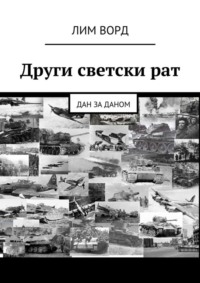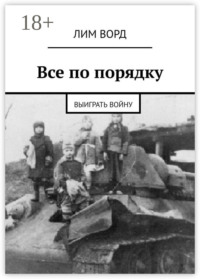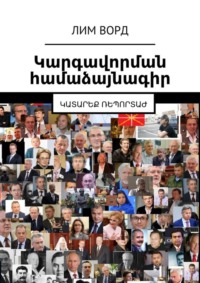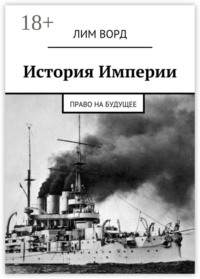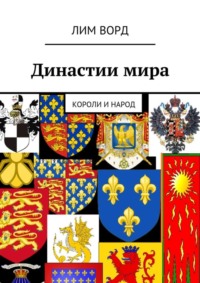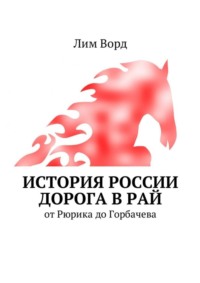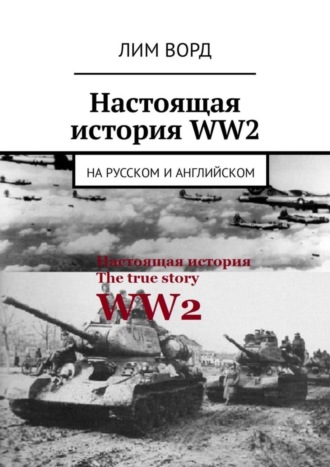
Полная версия
Настоящая история WW2. На русском и английском
Since the twenties of last century Mongolia is a protectorate of the USSR and, nominally – a socialist country. Attacks on it are already considered a matter of the Soviet Union. Therefore, when in May 1939 militaristic Japan, unhappy with the demarcation of the border with the Mongolian People’s Republic, attacks Mongolian outposts near Lake Khasan, according to the Protocol on Mutual Assistance of March 12, 1936, the Red Army interferes.
Ground-based battles along the river Halkin Gol, considered by the Japanese as the «right» border with their puppet state on the territory of China («above» Korea and more than three times), are conducted with varying success. The main events unfold in the air. Since May 22, for two days the Soviet fighter regiment is losing 22 I-15s, the Japanese – one. On an urgent basis, the pilots who showed up in Spain, as well as the newest I-16 and Chaika fighters, are called to the place of the conflict. From June 22 to June 28, the Japanese Air Force lost 90 aircraft, the Soviet Air Force lost 38 aircraft.
Since July 2, the Japanese ground group is moving into a large-scale offensive near Mount Bayan-Tsagan. In the battles participate up to 400 tanks and 300 aircraft from both sides at a time. Soviet troops quickly commanded by G. Zhukov. He manages to rectify the situation, although L. Beria sends the 1st rank commissioner L. Mehlis (a serial killer of the higher officers of the Red Army) to «check» the commander of the group of troops. The army commander’s psyche is stronger.
The Japanese side is losing 9,000 killed, almost all tanks and most of the artillery.
At the end of July, the intensity of military operations on the ground is declining. Again, fighting is in the air. Japan loses 67 aircraft, the USSR – 20. This is a prelude to a decisive blow by Soviet and Mongolian troops on August 20. The forces of the parties: the USSR-Mongolia – 30 thousand people, 500 tanks, 580 aircraft. Japan – 20 thousand fighters, 120 tanks, 450 aircraft. The army of the country of the Rising Sun is surrounded, crushed and destroyed. The day of the truce, on September 15, is crowned with an impressive air battle – 207 Soviet aircraft against 120 Japanese. Finally, «de jure», the conflict ends in May 1942; the parties find a compromise on the basis of some geographic map found in the archives.
Losses of the parties: the USSR – irretrievable losses of 10 thousand people, 250 tanks, 210 aircraft. Japan and the Union of Manchukuo, according to the averaged data – 36 thousand people, 300 tanks, 400 aircraft.
The Soviet-Finnish War of 1939—1940
Ideas of Great Finland, uniting the peoples of the Finnish-Ugric group; Finns, Karelians, Estonians, from the Gulf of Bothnia to the Ural Mountains, are spreading with the separation of Finland proper from Russia in 1918. The Government of Suomi sends a petition to the warring Germany; conclude a Brest peace with the condition of joining Finland (an ally of the Austro-German Empire), East Karelia.
In the course of their own civil war, on April 29, 1918, the White Finns capture Vyborg, arrange the genocide of all people who do not speak Finnish (retired military, schoolboys in Russian uniforms, even Poles). Three thousand people die.
On May 15, 1918, the Finnish government declared war on Soviet Russia. Its troops occupy, in particular, the Russian, from the 16th century, Pechenga, rename the name of this village in «Petsamo». Later, large deposits of nickel ore will be explored here, since 1935 their industrial development by Anglo-American corporations will begin.
The Finnish military partially block Petrograd, contributing to the first great famine in this city (according to averaged data, one hundred thousand people become victims of it, as well as «red» terror). At the rate of Mannerheim, a plan for «national uprisings» is being developed, Finnish instructors are being allocated to create centers of insurgency. However, the plans of the Field Marshal to conquer East Karelia, the Kola Peninsula, the offensive against Petrograd, Germany does not support. After the Vyborg tragedy, any joint operations to overthrow the Bolshevik government along with the Finns, the White Army refuses to conduct either.
By May 1920, parts of the Red Army were eliminating the puppet North-Karelian state. In October of the same year, Finland and the USSR signed the Tartous Peace Treaty, according to which Russia was losing part of its territories. However, in 1921 Helsinki unleashed the second Soviet-Finnish war, by forces of «forest partisans» committing acts of sabotage and killing of supporters of Soviet power. The fighting ends in March 1922, a document is signed to ensure the inviolability of the Soviet-Finnish border. About 30,000 people dissatisfied with the new order go to Finland and, up to the end of the 1920s, armed groups formed from them, make raids on Soviet territory.
Whatever it was, the mood in Finland does not seem friendly to the Soviet government. His proposal – the removal of the border from Leningrad at the expense of Finland, in exchange for twice the size of the areas of East Karelia. Rent of the island of Hanko to create a Soviet military base. Disarmament and demolition of the «Mannerheim Line» on the Karelian Isthmus. Finland rejects these conditions.
Military operations begin after the delivery of an ultimatum, on November 30, 1939, from shelling (ships of the Baltic Fleet) and the bombing of Helsinki. The Soviet Union is excluded from the League of Nations. European countries supply Suomi with weapons, including free of charge (350 aircraft, 500 guns) and volunteers. For two months the columns of Soviet troops advancing along the forest roads are being cut by Finnish skiers, surrounded and destroyed. This is no longer the Halkin Gol. In February, having saturated the troops with heavy artillery and tanks, having increased the norms of food allowance, the USSR is making progress in the breakthrough of the Mannerheim Line; On March 13, Soviet troops enter Vyborg. The world lies. Irrevocable, severe losses of the USSR – 130 000 people, 650 tanks, 640 aircraft; Finns – 26 000 people, with 450 000 refugees, 62 aircraft. From the Finnish captivity, 4,354 people return, and are being filtered by the NKGB GUGB. 450 of them are released, the rest receive from 5 to 8 years of camps.
This military operation could have a special meaning if the USSR kept Petsamo (Pechenga) with the reserves of nickel ore, much needed by Germany’s military industry. However, the international community, including, above all, the UK, is strongly opposed. The area Petsamo returns to the Finns, and they organize a large-scale supply of nickel to the Axis countries.
Pechenga will join the Russian Federation only in 1944.
Among the advantages in the combat training of troops, after such a harsh school, is the abolition of the institution of political commissars, the experience of breaking through long-term fortifications, the winter war as a whole, and the return to production of a submachine gun (PAP).
Cons, in addition to the hardest losses – the German government understands that, in principle, is able to achieve all-round success in the war against the «colossus on clay feet».
1. The Dot of the Mannerheim Line
2. Howitzer B-4
1. Dot line Mannerheim second generation, «millionaire» (name of the amount in the Finnish stamps expended for the erection). The thickness of reinforced concrete walls is 2 m, the length of the structure is 30 m. Conventional armament is two 76 mm. guns, antitank 37 mm. guns, machine guns. Addition – ditch, mines, barbed wire, concrete bungs. In total, the second generation of BTs is built 7.
2. Howitzer B-4, caliber of 203 millimeters. The main hero of the Finnish war. The nickname «Karelian Sculptor», for the fact that this instrument turns Finnish dots into a kind of avant-garde statues. The parameters of Finnish DOTs are «million»: the length is about 40 meters, the thickness of the walls of reinforced concrete is 2 meters. The result of action B-4 – if not the penetration of the walls, then the psychological impact on the defenders of the DOTs. Many of them, after a long bombardment of the B-4 went crazy.
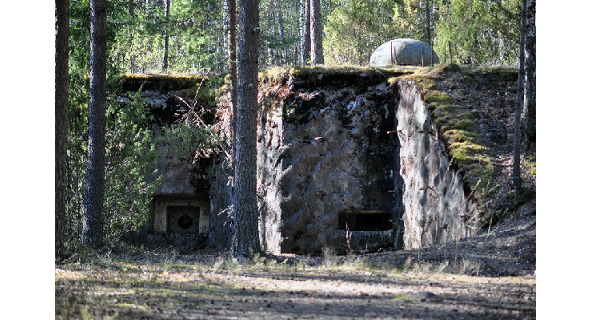
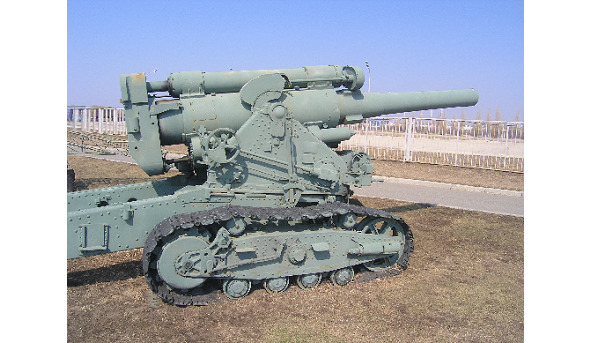
The entry of the Baltic countries into the USSR
In October 1940, the Soviet Union invites Estonia, Latvia and Lithuania, under a mutual assistance agreement, to deploy a military contingent of 25,000 troops on their territory to defend themselves against Hitlerite Germany. It is already clear that the Red Army is inclined to achieve its goals, regardless of any losses. Two weeks later, the governments of these countries are accused of collusion with Germany (which is partly true), repressions against foreigners (Poles, etc.) and are shifting. In the summer of 1940, following the results of nationwide voting, the republics are formed by communist governments and adopt declarations of entry into the Soviet Union; which are immediately approved by the Supreme Soviet of the USSR.
According to the documents of the NKVD of June 17, 1941, in Lithuania, 5,663 people, mostly secret police officers and «classical capitalists», were subject to detention, 10,186 in Latvia, 5,624 and 9,547 in Latvia respectively, and 3,179 and 5,979 in Estonia.
President of Lithuania Antanas Smyatona wisely emigrates to Germany, then Switzerland and the United States. His Estonian counterpart Konstantin Päts is deported with his family to Siberia, receives 25 years of camps, since 1942 is kept in a prison psychiatric clinic, he died there in 1956. The head of Latvia, Karlis Ulmanis convinces the people that «friends have come», actively cooperates with the new, pro-Soviet government, and in particular, publishes the «Law on the fight against wrecking». Somewhat later he begins to understand the situation, asks the Kremlin for permission to travel to Switzerland, but eventually ends up in the NKVD camp near Krasnovodsk (Turkmenistan), where, in 1942, he dies.
The Second World War
Occupation of Poland
The territories of Poland, acquired by Germany at the expense of Germany under the Treaty of Versailles (West Prussia and part of Silesia), prevent the Reich from uniting with East Prussia, the «cradle of German militarism», its sacral center. After negotiations on the creation of a land corridor, or at least the transit of goods through Poland without bureaucratic obstacles, September 1, 1939, the invasion begins simultaneously from Germany, Slovakia and Prussia. The Polish Air Force, having existed for three days, shoots down 130 Luftwaffe aircraft. On September 22, the bombing of Warsaw begins: 1,150 aircraft drop 4,500 tons of bombs, and on September 28 the Polish military command (the civil government takes refuge in France) signs an act of surrender.
On September 17, Soviet troops enter Poland to restore Western Belorussia and Western Ukraine, captured during the Russian-Polish war of 1920, to protect the Belarusians, Ukrainians and Jews who are there, respectively. The main idea: if Poland shows enough courage in confronting Hitler, it is actively assisted by France and England, the Wehrmacht meets a worthy rebuff, the status quo is observed on the part of the USSR. The obvious victory of the Germans, inclined, of course, to occupy the entire territory, means the entry into the game of the Red Army.
Part of Poland – the Vilna (Vilnius) region with 490 thousand inhabitants are transferred to Lithuania. Some territories pass to the satellite of Germany – Slovakia. Refused to accept Soviet citizenship 78,000 refugees (including Jews) from Germany occupied by Poland, are deported back, or receive 20 years of camps.
Losses of the parties: Poland – irretrievably 63 000 soldiers and officers in the battles with the Wehrmacht, 420 000 in German captivity, 230 000 in the USSR (ordinary and non-commissioned officers are dismissed to their homes, in 1942 most of them, in agreement with England, bypassing Iran, joins the British forces, forming the army of General Anders or Sikorsky), as well as 357 aircraft of different types. Germany – 15 000 killed, as well as 319 armored cars and 285 aircraft (as a result of air crashes, air defense and fighter operations). Soviet troops (RKKA) – 2,000 dead, 17 tanks and 10 aircraft. Poland: irretrievable losses in battles with the Red Army – 3000. Slovak army: 18 people.
So, in the war included England and France, who acted as the guarantor of Poland’s security, but the first six months of fighting on their fronts are almost not conducted. Flyers prefer to scatter leaflets («confetti»), rather than bombs, over postings of the enemy, «We will not shoot at you if you do not shoot us».
Hitler is interested not so much in the island of the foggy Albion, as in the English dominions. Even if you capture London, the government will move to the territory of one of the colonies, and the fight will continue indefinitely. Honorary peace with the Anglo-Saxons, the Nordic race, equal, according to the Fuhrer’s admission, to the Germans themselves, the delineation of the territories of influence is what Germany wants.
Benelux countries
Denmark and Norway. They are threatened with the capture of two centers of power: England and Germany. Denmark tends to the protectorate of Germany, the leaders of the country give the order not to resist the invasion; which took place in March 1940, and cost the life of thirteen Danish and two German soldiers. The Reich acquired a good supplier of agricultural products, a dozen of warships, as well as a 6,000-strong volunteer corps, who fought on the Eastern Front until his disbandment in 1943.
In April 1940, German warships attacked the British-assisted Norway and, by June 16 of the same year, seized it. The irrevocable human losses of the opponents are approximately equal: the Norwegians have 1,400 men, and also 60,000 prisoners, the British 1800, French and Polish 500, Germans about 4000. Allied forces are deprived of a total of 15 warships, including the aircraft carrier, Germany – 34 large and 10 small; these losses make the landing operation in the UK questionable. As a result of the submarine war, England is losing 485 ships, which is one third of the merchant fleet: Germany exchanges them for its 9 submarines.
On May 10, 1940, Belgium and Holland receive an ultimatum from the German command with reproaches in violation of neutrality – the unhindered passage of British aircraft over their territory, as well as the construction of long-term fortifications facing Germany. The note calls on Holland not to prevent the German troops entering the country, not as enemies. which, however, by this time already are on the land of the Netherlands. The government of the country of dams and cheese requests assistance from the British and French, their expeditionary corps is being put forward to establish contact with the Dutch.
German paratroopers seize the strategically important bridge from Rotterdam, which allows German tanks to block all large Dutch infantry units. Under the threat of bombardment of Rotterdam, a demand is demanded for full surrender of the state. The ultimatum is accepted, however, as a result of a mistake, or deliberate action of 60 Heinkel 111 bombers, 97 tons of bombs are dropped on the city. Holland surrenders five days after the outbreak of the war. Losses of the Dutch side: 2330 soldiers and officers, 70 aircraft, (68 Typhoons lost by the British Air Force), as well as 2,000 civilians, German – about 3,000 military, 275 aircraft.
The idea of an ambitious German officer, Erich von Manstein, is to attack the Anglo-French army, superior in number (4 million to 3 million Wehrmacht fighters), through the mountain (Belgian) Ardennes, from the north, through the forces of a few but unified tank units, the Fuhrer.
Invasion of France
The battle continues to unfold in neighboring Belgium, where the combined French, English, Belgian troops, and Wehrmacht forces converge on May 10—11. The first, truly grandiose operation of the Germans begins almost a failure: in the vicinity of Luxembourg, a motorized column of 41,000 units of equipment, a bumper to the bumper, stands in a 250-kilometer traffic jam. However, the confused allies and do not subject this light, desired goal to the bombing. Finally, 1,100 tanks break away from the concentration of infantry and break through the mountain serpentines to Belgium. Three days later, steel cars, with carriages filled with primitin, almost unimpededly cross the borders of France.
Of the battles of this period, one should note the first major tank battle at Ann, where 623 German (mainly Panzer 1—2) and 415 French (Renault, Gochkis, practically the same) tanks came together. The shortcomings of German armored vehicles were revealed – thin, 14.5 mm. armor and weak 20 mm. gun, against 45mm. armor and 37 mm. Guns tanks, Gochkis, whose crews, incidentally, consist of only two people. The tactics of the Panzerwaffe – beating with a single steel fist, with clear coordination over the radio and the clear purpose of the operation being conducted, shows superiority over the manner of the opponents to place the non-radiofected tanks in a shaky line. Belgium surrenders on May 28, its armed forces are getting out of the fight. Places of battle are moving to French Dunkirk. The movement of the German panzerwaffe is hampered by the rugged terrain; They also do not aspire to enter the zone of action of the large-caliber naval artillery of the British. Surrounded by Anglo-French troops, taking advantage of the bad weather, interferes with the actions of aviation, they are evacuated by the sea, leaving all their heavy equipment to the enemy. The idea to create here a springboard, a splinter in the body of fascist Continental Europe, is not considered.
Italy enters the war on the side of Germany; although its 300,000-strong army does not have much success, it completely demoralizes the French, and, on June 21, in the Compiegne Forest, where the Treaty of Versailles was signed 20 years ago, France’s surrender is announced.
The loss of Belgium: 6,000 people irrevocably, 202,000 prisoners, as well as 112 aircraft, France 84,000 killed, 1.8 million prisoners (the majority are sent to forced labor in Germany), 50 aircraft. Great Britain – 68,000 people, about 1,000 aircraft, 64,000 vehicles, Germany – 18,000 soldiers and officers on German data and 45,000 according to estimates of English historians, 432 aircraft. In addition to the developed French economy, Germany receives 2,000 combat tanks (used against guerrillas or converted into ACS), 1,400 aircraft and a 7,000-strong French volunteer legion. Part of the navy, in order to avoid its seizure by the Germans, together with 1,200 sailors, was destroyed by British aircraft (Operation Catapult), the remaining ships were sunk by the French themselves in 1942. The Catapult, coupled with the British preference for its soldiers during the evacuation from Dunkirk, led to the unwillingness of the French military in the French colonies (Syria, Senegal, Lebanon), to join the struggle against the Axis countries, and, in some cases, active resistance to the allies.
Meanwhile, the gold of the French National Bank, on the battleship Richelieu, on June 19, 1940, leaves the port of Brest and is heading for Senegal. He is adjoined by precious metals from Poland, Belgium and the Netherlands. Later, this charm falls into the hands of the Americans, and returns only seven years later, according to the Marshall plan, in the form of loans to, exclusively American goods.
1. Occupation of France by Germany and Italy
2. Flooding part of the French fleet off the coast of Algeria
1. Occupation of France by Germany and Italy.
2. Flooding of a part of the French fleet of Vichy France by naval forces and British aircraft (Operation Catapult, also the Anglo-French War of 1940).
Bessarabia and Northern Bukovina. On June 27, 1940, the government of the USSR sends an ultimatum to the Romanian government demanding the return of Bessarabia (rejected by Romania in 1920) and Northern Bukovina, as compensation for the exploitation of the population of Bessarabia. A few hours before the start of the Soviet invasion, the Romanian king accepts all his conditions. Territories are divided between Soviet Ukraine and Moldova. The population of Bessarabia, numbering 3.7 million people, indeed, which underwent many humiliations and terror from the Romanian authorities, as a whole is loyal to the Soviet government. Ethnic Romanians and Ukrainians (85%) Bukovina, 0.8 million people who did not feel this kind of attitude, regard annexation without enthusiasm.
Italy has its own interests, primarily in Africa, where it intends to win back British colonies – Egypt, Kenya, Sudan, Ethiopia, part of Somalia. He wants to take also Greece, he puts forward an ultimatum demanding that it be given the opportunity to occupy certain strategic objects. To help the Greeks come Britain, Union Australia. Defeated, Mussolini asks for help, and, in February 1941, the expeditionary corps of General Rommel arrives in Libya. German troops beat off the British north-eastern part of this country (Cyrenaica), go to the borders of Egypt, after which the front stabilizes.
Soviet-German relations are cooled on November 12, 1941 at the talks in Berlin; Molotov is denied accession to the countries of the Triple Alliance (Axis) as a full partner with interests in Finland, Southern Bukovina, Bulgaria, Greece and Yugoslavia, as well as Turkey (Straits).
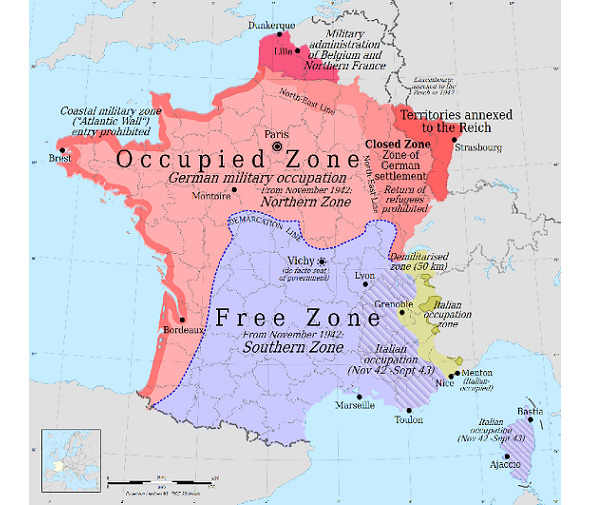
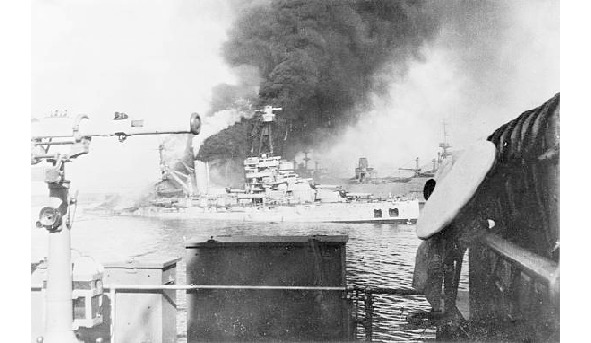
Yugoslavia and Greece
Yugoslavia. On March 25, 1945, the Prime Minister of Yugoslavia signed a protocol on the accession of his country to the Tripartite Pact; the same day in Belgrade is an 80-thousand demonstration against the alliance with Germany, which, in addition, is marked by the defeat of the German Information Bureau. A new government is being formed, and, on April 5, the USSR and Yugoslavia sign a treaty of friendship and non-aggression.
These events Hitler views as an excuse for an invasion. And, on April 6, the armed forces of Germany, Italy and Hungary enter Yugoslavia. On Belgrade, 2,000 tons of bombs fall, on April 16 the Yugoslav army surrenders, 344,000 people are captured (Croatians, Hungarians and Germans-Volksdeutsche are later released). Irreversible losses: Germany 165 people, 40 aircraft, 3 tanks. Italy 3300 people, 13 aircraft, 11 tankettes. Hungary 130 people, 1 airplane. Yugoslavia: 5,000 military, 57 downed, 150 aircraft destroyed on the ground.
Greece. For some political reasons, the seizure of Yugoslavia prompts Hitler to render more effective assistance to his Italian allies. And, on April 6, 1941, from the territory of Bulgaria, German troops invade Greece. Athens is captured on April 27, after another three days Greece will capitulate. A month later the Wehrmacht invaded the island of Crete, considered primarily as an airfield for control of the Luftwaffe in the Mediterranean. The large losses of paratroopers do not allow further operations to be carried out to capture Cyprus and the Suez Canal immediately. Losses of Greece: 14,000 killed, allies 900, with 14,000 prisoners, the Wehrmacht 1,450 killed, Italy – about 20,000 people.
It is believed that the need to seize Yugoslavia, as well as the stubborn resistance of Greece, delayed the start of the invasion of the USSR from May 15, 1941 to June 22, and these five weeks had a decisive effect on the course of the entire war.
Clash of the Titans
Count the forces of the warring parties. The population of the Soviet Union according to the results of the 1939 census is 170 million. It should be borne in mind that the leaders of the 1937 census, who showed the result of «only» 162 million for «undercounting» of the population, were shot. In 1940, territories with a population of 18 million people were annexed to the USSR, though not always loyal to the new system, having a different mentality. We assume that the results of the «shot» population census are the only correct ones, then by 1941 the population of the colossal state was 180 million people.


